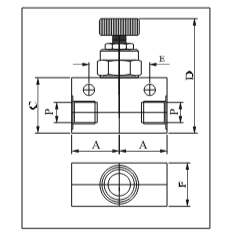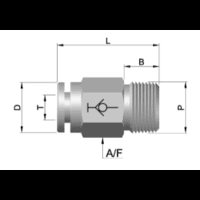
Flow Control Valve: Precision Fluid Management
June 10, 2024Introduction
Ever wonder how a fitting can maintain fluid flow control even while the pressure behind it rises? Choked flow is the term for this kind of thing. It’s a fascinating concept that is essential to many technical areas, including chemical and aerospace operations. We will examine the meaning, causes, and applications of blocked/choked flow as we look into the details in this blog post.
What is Choked Flow?
When the speed of a fluid in a passage reaches a maximum value, even with a rise in upstream pressure, the flow rate cannot be increased further, resulting in choked flow. Usually, this maximum speed is the same as the fluid’s local sound speed.
Causes of Choked/Blocked Flow
A large decrease in the flow passage’s cross-sectional area is the main cause of choked flow. There are several reasons why this might occur, including:
- Nozzles and Orifices: A fluid’s flow via an orifice or nozzle reduces its cross-sectional area, which raises its speed. There may be blocked flow if the space gets too narrow.
- Venturis and Venturi Meters: These instruments have a dividing segment after a combining part. The fluid’s velocity increases as it passes through the converging portion, and if the venturi’s throat is too narrow, blocked flow may occur.
- Flow Restrictions: Choked flow can also result from blockages or limitations in a flow channel. Such a partially closed valve may result in a restriction that limits the flow rate.
Choked Flow Conditions
It needs to be one of the following circumstances for blocked flow to happen:
- Compressible Fluid: The fluid needs to be compressible, which means that temperature and pressure will manage the fluid’s density. The most popular type of compressible fluids are gases.
- Adiabatic Flow: There must be no heat transfer between the fluid and its surroundings for the flow to be constant.
- Isentropic Flow: The flow needs to be directional and continuous in order to be considered isentropic.
Applications of Choked/Blocked Flow
Choked flow is used in many different sectors, such as:
- Aerospace: Blocked flow is necessary in rocket engines to maximize force. The goal of the choked flow condition of the nozzle is to ensure that the maximum mass flow rate is reached.
- Chemical Engineering: Systems for pressure relief and gas metering both use choked flow. Engineers may create systems that run effectively and securely by having a solid knowledge of blocked flow situations.
- Automotive Industry: Fuel injectors and carburettors use blocked flow principles to regulate the amount of fuel that enters the engine.
- Environmental Engineering: In order to eliminate contaminants from gas streams, venturi scrubbers and other air pollution control systems use blocked flow.
Check out this blog too: Control Valve: Quiet Superstars of Daily Life
Calculating Blocked Flow
Complex formulae that take into account the fluid’s characteristics, the flow passage’s geometry, and the pressures upstream and downstream are used to calculate choked flow. Simplified formulae and empirical correlations, however, can be applied to a wide range of real-world situations.
Conclusion
Choked flow is an important issue that affects numerous engineering applications and has significant applications. Engineers may create and improve safe, effective systems by understanding the concepts of choked flow. Knowing blocked flow is useful whether you work in chemical engineering, aerospace engineering, or another discipline.


